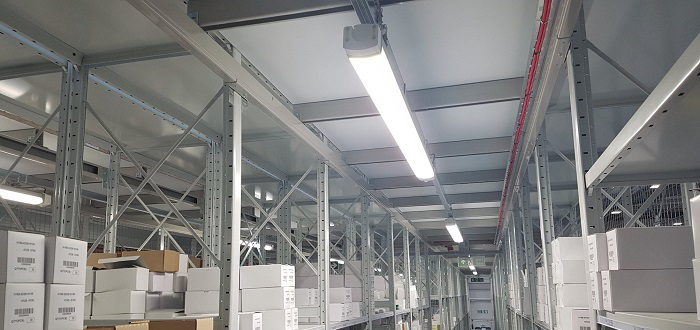-
Nutrivend selects Forterro’s Orderwise to support online expansion and streamline operations - April 11, 2025
-
ARROWXL LAUNCHES AMBITIOUS ZERO WASTE ROADMAP - April 8, 2025
-
THE BCMPA’S NEW CAMPAIGN DRIVES OUTSOURCING SUCCESS IN Q1 - April 7, 2025
-
BLACKOUT TECHNOLOGIES TARGETS TELEMATICS-INTEGRATED MOBILE DEVICE BLOCKING TO COMBAT SMARTPHONE DISTRACTION - April 1, 2025
-
Sparck Technologies awarded Royal designation - March 27, 2025
-
OpenADR Alliance announces first OpenADR 3.0 certified products with EVoke Systems, E.ON Energy and Universal Devices - March 25, 2025
-
Growing fulfilment and contract packer appoints new Managing Director - March 25, 2025
-
When is it time to invest in a WMS? Understanding the key trigger points - March 25, 2025
-
eCapital helps Vantage Recruitment on its journey to financial success - March 24, 2025
-
Hugo Beck Celebrates 70 Years of Packaging Innovation with Open House Events - March 20, 2025
Warehouse operators urged to consider the whole-life costs of lighting systems.
When upgrading the lighting technology within a distribution centre or other industrial building, too many companies fail to consider the whole life and installation costs of the luminaires they are specifying and instead opt simply for the cheapest product available. By doing so, they could be wasting thousands of pounds in higher energy bills and significant ongoing maintenance costs.
That is the message from David Fanthorpe, senior lighting systems designer at Leicestershire based industrial and commercial lighting specialist, Ecolighting.
“One of the most common mistakes that people make when installing new lights is to choose substandard fittings. Sure, you will save on energy, but you can spend those savings in maintaining and replacing the units. Facilities managers need to realise that the cost of ownership is a big factor in the savings that can be made in the long term,” he says.
David Fanthorpe continues: “I often find when creating a lighting scheme, that by introducing luminaires with a slightly higher wattage, but a clever optical design, you will require less fittings to provide a better quality of light. And, fewer fittings mean reduced energy consumption, reduced product costs, reduced installation costs and reduced, if any, maintenance.
“Point for point replacement might seem easy, but it is not necessarily the best way. For example, I recently visited a site where the facilities manager was planning to remove all of the 400 watt Sodium fittings and replace them with 160 watt LED units. He had calculated that this would result in a 65 per cent reduction in his energy bill, overlooking that it would require over 1,000 160 watt luminaires to provide the light quality required.”
“We were able to design a system that used our 200 watt Pegasus LED fittings that not only enhanced light quality but allowed the number of units required and installation costs to be cut significantly. Over an 18 month period our system will provide a complete return on the company’s investment, what’s more, those savings are replicated every year thereafter – so the savings over a 10 year period become quite staggering. “
Other things to consider when calculating the whole life cost of a new lighting system include the product’s electronics and IP rating.
“IP – or Ingress Protection – ratings are used to define levels of sealing effectiveness of electrical enclosures against intrusion from foreign bodies such as dirt and moisture and a fitting with poor quality electronics, or a bad IP rating will need replacing or cleaning more than a better quality luminaire, and labour costs are sky high these days” explains David Fanthorpe.
He continues: “Whole-life cost, or life-cycle cost, refers to the total cost of ownership over the life of an asset. It is something that, for example, forklift truck manufacturers have emphasised for years when stressing the importance of analysing a truck’s running costs and operational efficiency before buying lift trucks.
He adds: “It is the responsibility of companies such as Ecolighting UK to inform facilities managers and warehouse managers about their options, and provide a solution that is best for them. We need to ensure that they think about the life-cycle costs of their lighting technology in the same way as they do their materials handling equipment.”
“After all, it is estimated, that recharging the fuel cells of battery-powered forklifts and other MHE accounts for around 25 per cent of a warehouse’s annual energy expenditure, while the cost of lighting the building with old fashioned or inappropriate lighting technology will make up 70 per cent of the bill!” https://ecolightinguk.com/
































